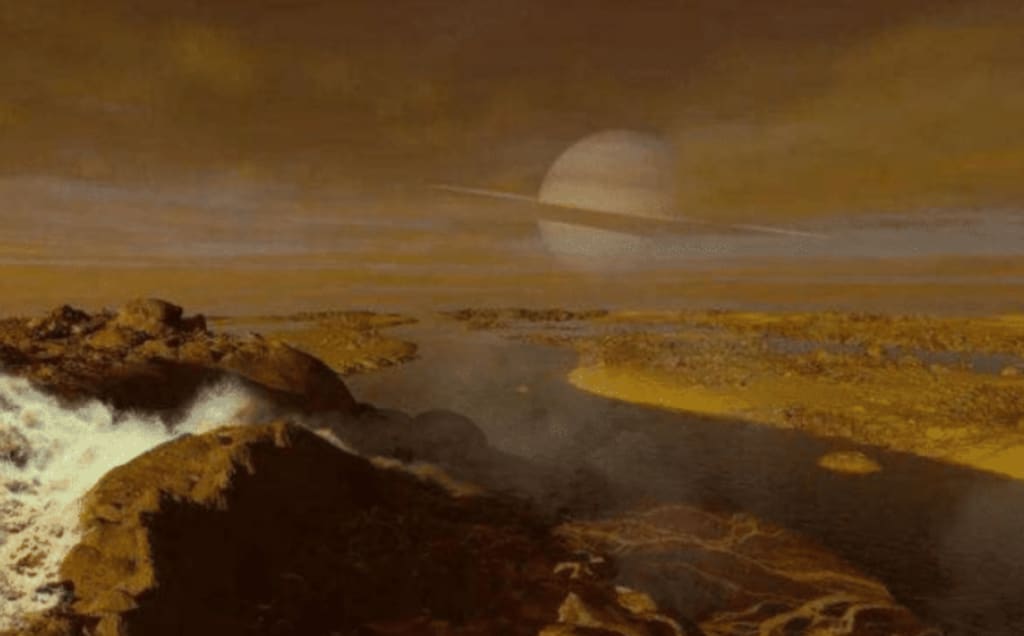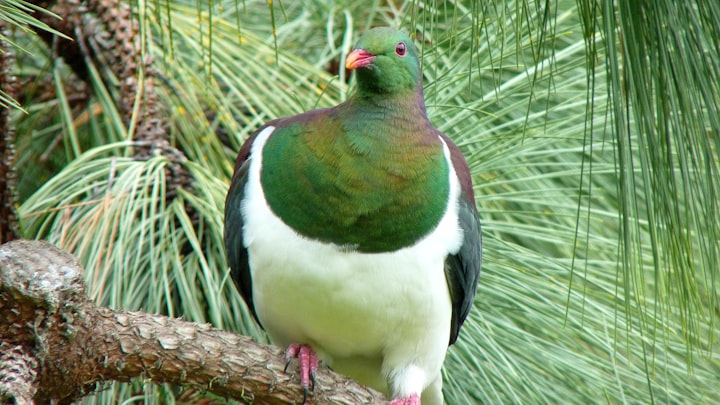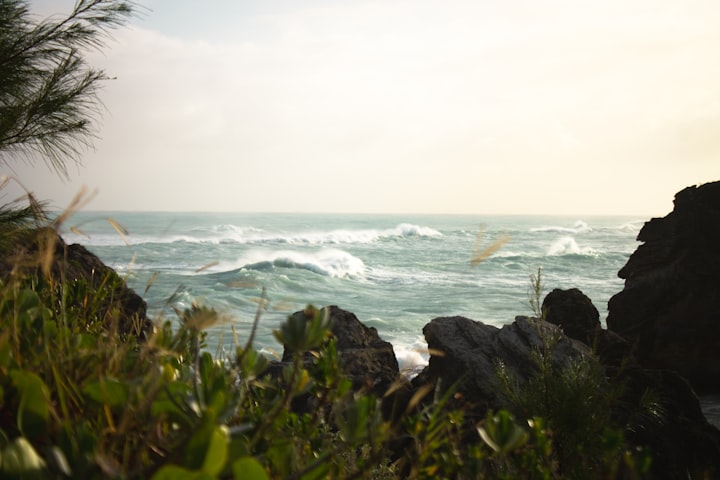
This is a real picture from 1.5 billion kilometers away, and a real image taken by a human probe.
The scene you see in front of you is not the Earth, but a most realistic extraterrestrial body, in the picture we can see a more blurred world, if not the probe through the thick atmosphere of this planet, perhaps we can never see the scenery here.
And you are now seeing the picture of this planet, which is the famous Titan 6, what exactly was human probes found on Titan 6? And why do scientists think there is a good chance that life exists on Titan? Titan, similar to its name, is the 6th moon of Saturn and the 1st largest moon of Saturn, and the 2nd largest moon of our solar system, just below Io3 in size.
Titan was first discovered by scientist Christian Huygens in 1655, but in the hundreds of years since its discovery, we have not seen the most realistic surface of Titan because it is covered by a thick layer of the atmosphere under which its surface is hidden.
In the 1980s and 1990s, the human probes Pioneer 11 and Voyager 1 and 2 flew close to Saturn and took pictures of Titan, however, these three probes did not obtain data on Titan's surface characteristics, but only roughly knew Titan's temperature and atmospheric composition were known.
Although at the time scientists already knew that the surface temperature of Titan was as low as 179 degrees below 0 degrees Celsius, it would be difficult for life to survive on its surface at such low temperatures. However, scientists have found that Titan is most likely a world full of liquid methane and hydrocarbons. At the same time, there are complex organic molecules in Titan's atmosphere, so they believe that there is a high probability of exotic life on Titan 6.
To further unravel the mystery of life on Titan, scientists decided to launch a probe to go deep into the surface of Titan to explore the most realistic look of Titan's continents. In October 1997, Cassini Huygens, a probe with a mission, was launched from the surface of Earth and began its great journey to Saturn. Cassini Huygens is an interplanetary spacecraft with a diameter of three meters and a height of seven meters, weighing 6.4 tons, equipped with twenty-seven kinds of the most advanced and developed scientific equipment and instruments.
Cassini Huygens will be separated into Cassini and Huygens shortly after arriving at Saturn, where Cassini will enter Saturn's orbit, become one of Saturn's moons, and explore the rest of Saturn's satellite system. And Huygens is our main character today, it will penetrate deep into the interior of Titan's atmosphere to reach the continents of Titan and unravel the mystery of life on Titan for us.
In July 2004, Cassini Huygens finally reached Saturn's orbit after a seven-year interstellar journey and became one of its moons. Cassini Huygens made two flybys of Titan on October 26 and December 13 of the same year, providing a wealth of data for Huygens' entry into Titan, and on December 24, Cassini Huygens began its separation, detaching from its mother ship in Saturn's orbit and beginning its journey to Titan.
To conserve enough power, Huygens will be put into hibernation during the flight to Titan. On the afternoon of January 14, 2005, after a treacherous 20-day journey, Huygens finally reached the high altitude of Titan 6, at the target position of twelve hundred and seventy. At that time, it was flying into Titan's atmosphere at 20,000 kilometers per hour. For Huygens to enter Titan smoothly, the scientists started the landing procedure for Huygens.
Huygens began its journey through Titan's atmosphere. In just three minutes, Huygens' speed will drop from 18,000 kilometers per hour to 1,400 kilometers per hour, and then to 300 kilometers per hour. Then at a distance of 160 km above Titan 6 the various equipment on board, Huygens starts working and is transmitted back to Earth scientists via Cassini flying in Saturn's orbit.
And the photos we humans now see are the most realistic look of Titan, astronomers, for the first time through the thick atmosphere see the surface of Titan, the original in this thick layer of atmosphere hidden under such a world.
There are many signs of erosion, mechanical friction, and hydrological activity on Titan's surface, with interlocking rivers stretching from high and low mountains to shady areas of embankments, eventually merging to form meandering rivers. They extend to certain large dry lakes, in which there are traces of island-like features, like the river systems on our planet.
These giant traces of lakes and rivers do not mean that there is water here, but probably lakes made of liquid methane and ethane. They shape the place into a giant methane world, while Huygens also captured such a sight on the surface of Titan, where before its lens there is a huge flat land covered with many rocks that present as distinctly rounded structures, like the pebbles in our Earth's rivers, which means that these rocks have been washed by the lake in the past The process.
Scientists believe that although Titan, is extremely cold, even much colder than our Earth's North and South Poles. However, Titan, has winds, rain, and tectonic processes on its surface that are more similar to those of Earth, while its environment is very similar to that of the early Earth. As a result, Titan 6 is also the most similar planet to Earth in our solar system.
And these liquid methane and ethane and other substances on its surface are likely to give rise to exotic life with acrylonitrile as the base material for cell membranes. It is for these reasons that although the probe detected temperatures as low as -179 degrees Celsius on Titan, scientists still believe that there is a high probability of life on Titan.
Unfortunately, Huygens reached the surface of Titan without incident and brought us a lot of information about Titan. However, because Cassini did not open one of the channels for receiving data from Huygens, the photos we obtained of Titan were only half of those taken by Huygens, and at the same time, considering the limited resources that Huygens carried with it, it ended its exploration mission about ninety minutes after landing and remained on the surface of Titan forever.
And whether there is life on Titan, we still do not have clear evidence, but it is worth believing that if we find the existence of extraterrestrial life in the years to come, then the possibility of the existence of Titan 6 is very large.
About the Creator
Bar wall
Countries people need science, not scientific development, will certainly become a colony。






Comments
There are no comments for this story
Be the first to respond and start the conversation.